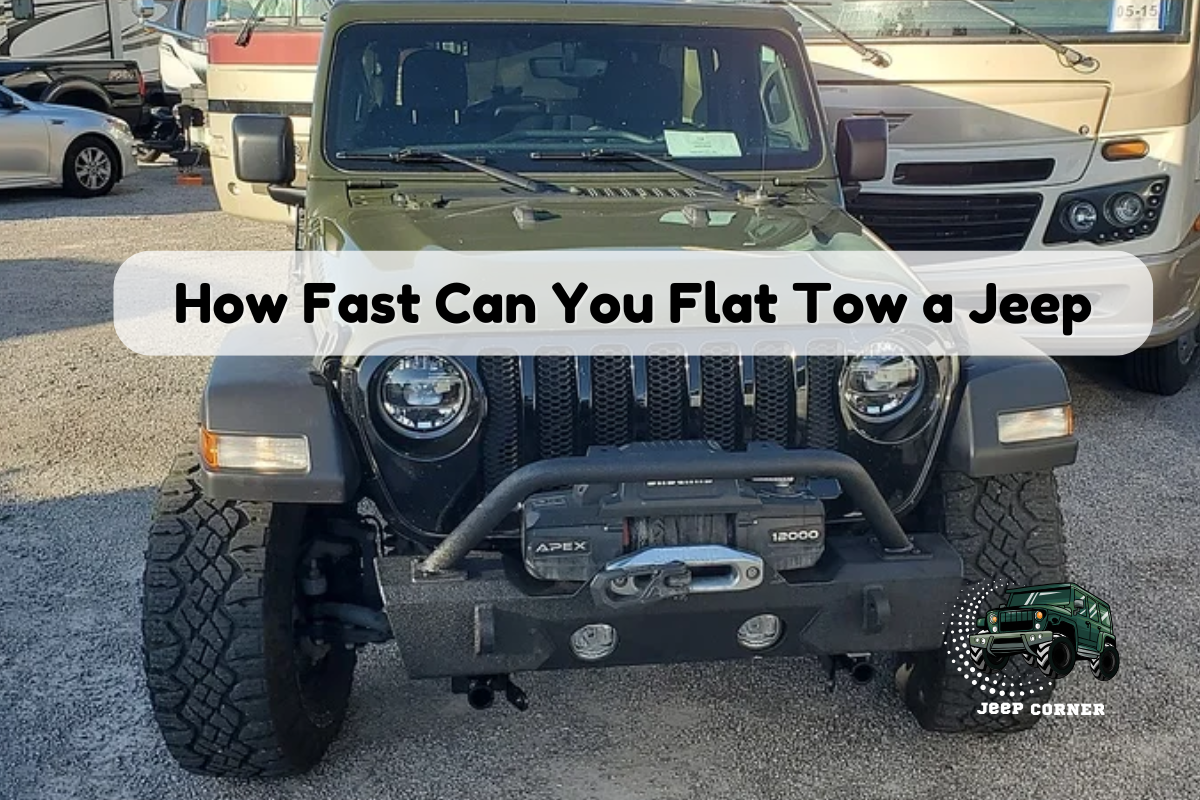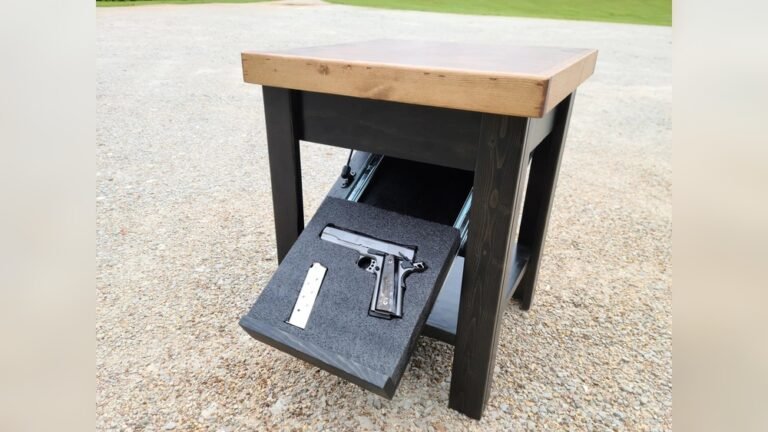How Fast Can You Flat Tow a Jeep: Essential Speed Limits Revealed
If you’re planning to flat tow your Jeep, one question probably tops your mind: how fast can you safely go? Knowing the right speed isn’t just about following rules—it’s about protecting your Jeep’s transmission, ensuring your safety, and making your trip smooth.
Whether you’re heading out on a long road trip or just moving your Jeep behind an RV, understanding the speed limits and best practices for flat towing is crucial. You’ll discover exactly how fast you can flat tow your Jeep without risking damage or accidents.
Keep reading, because getting this right means peace of mind every mile of the way.

Credit: www.reddit.com
Jeep Models Suitable For Flat Towing
Choosing the right Jeep model for flat towing is essential for safety and vehicle health. Not all Jeeps are designed to be towed with all four wheels on the ground. Knowing which models work best helps avoid costly damage and hassle. Several Jeep models come factory-ready for flat towing, meaning they have the proper drivetrain and transmission features built in. Understanding the transmission types also plays a key role in determining flat towing suitability.
Factory-ready Jeeps
Some Jeep models come ready to flat tow straight from the factory. The Jeep Wrangler is the most popular. It has a transfer case that can shift into neutral, allowing all four wheels to roll freely. The Jeep Gladiator also supports flat towing without major modifications. These models have strong drivetrains designed to handle towing stress. Other models may need extra kits or changes to be flat towed safely. Always check the owner’s manual for flat towing approval and instructions.
Transmission Types And Flat Towing
The type of transmission affects flat towing ability. Manual transmissions often allow flat towing more easily because you can leave the transmission in gear. This prevents damage to the transmission while the wheels turn. Automatic transmissions usually need to be placed in park or neutral, and sometimes require a transmission lubrication pump. Many Jeep automatics have special settings or require specific procedures to flat tow safely. Knowing your Jeep’s transmission type helps you prepare the vehicle properly before towing.

Credit: autobossrv.com
Essential Equipment For Flat Towing
Flat towing a Jeep requires more than just hooking it to your vehicle. Essential equipment ensures safety and protects both vehicles. Proper gear helps maintain control and visibility on the road. This section covers key equipment for flat towing your Jeep.
Tow Bars And Base Plates
Tow bars connect your Jeep to the towing vehicle. They allow smooth, secure towing. Base plates attach to the Jeep’s frame and hold the tow bar. Choose base plates designed for your Jeep model. Both parts must fit tightly for safe towing.
Supplemental Braking Systems
Supplemental brakes help slow the Jeep while towing. They reduce wear on the towing vehicle’s brakes. Many states require these systems by law. Options include electric or hydraulic systems. Proper installation and use improve safety for everyone on the road.
Lighting And Safety Connections
Lights on the Jeep must sync with the towing vehicle. Brake lights, turn signals, and running lights must work properly. Wiring kits connect the Jeep’s lighting to the tow vehicle. This setup ensures other drivers see your intentions clearly.
Breakaway Kits
Breakaway kits activate the Jeep’s brakes if it separates from the tow vehicle. They prevent accidents and damage. The kit includes a battery and cable attached to the tow vehicle. If the connection breaks, the brakes apply automatically. This safety feature is critical for flat towing.
Preparing Your Jeep For Flat Towing
Preparing your Jeep for flat towing is essential for a smooth and safe journey. Proper preparation protects your vehicle’s drivetrain and transmission. It also ensures the Jeep tows without damage or mechanical issues. Follow these steps carefully before towing your Jeep behind an RV or truck.
Setting The Transfer Case
First, set the transfer case to neutral. This step disconnects the driveline from the wheels. It prevents damage to the transfer case and transmission. Check your Jeep’s owner manual for the exact procedure. Some models require shifting the 4WD lever to neutral or using a button. Never tow without putting the transfer case in neutral.
Tire Positioning
All four tires must stay on the ground during towing. Never lift any tire off the ground. This keeps the driveline components aligned and prevents stress. Inflate the tires to the recommended pressure. Proper tire pressure reduces wear and improves towing safety. Avoid using a dolly unless your Jeep’s manual approves it.
Transmission Settings
For automatic transmissions, shift the gear selector to park or neutral as instructed. Some Jeep models require leaving the transmission in park. For manual transmissions, leave the transmission in first gear or neutral. This helps prevent transmission damage. Double-check your Jeep’s manual for the correct setting. Incorrect transmission positioning can cause costly repairs.
Speed Limits For Flat Towing A Jeep
Knowing the speed limits for flat towing a Jeep is crucial for a safe and smooth journey. Speed affects control, braking, and wear on your vehicle and towing setup. Different factors influence the maximum safe towing speed. These include manufacturer rules, local laws, and general safety advice. Understanding these helps you protect your Jeep and others on the road.
Manufacturer Recommendations
Jeep manufacturers set specific speed limits for flat towing. Usually, this limit ranges between 45 and 65 mph. Check your Jeep’s owner manual for exact numbers. Following these guidelines prevents damage to the drivetrain and transmission. Jeep experts design these limits based on vehicle tests.
State And Local Regulations
Speed limits for towing vary by state and local areas. Some states have lower speed limits for towed vehicles. Others require special permits or equipment at higher speeds. Always research the rules where you plan to drive. Obeying these laws helps avoid fines and accidents.
Safety Considerations
Driving slower improves control and reduces risk when flat towing. High speeds increase strain on the tow bar and brakes. Road conditions like wind, hills, and traffic also affect safe speed. Use a supplemental braking system to improve stopping power. Regularly inspect your towing setup for wear and damage. Drive cautiously to protect your Jeep and everyone on the road.
Towing Behind Different Vehicles
Towing a Jeep flat behind different vehicles affects how fast you can safely drive. Each towing vehicle type has unique features. These features influence towing speed limits and safety precautions. Understanding these differences helps maintain control and protect your Jeep.
Speed limits for flat towing vary depending on the towing vehicle’s power, weight, and braking system. Proper setup and equipment are essential regardless of the vehicle used. Below are details about towing with motorhomes and using SUVs or trucks.
Towing With Motorhomes
Motorhomes often tow Jeeps for extra mobility during trips. They have strong engines and heavy frames, but towing speed is usually limited to 55-65 mph. This keeps both vehicles stable on highways.
Motorhomes require a tow bar and supplemental braking system for the Jeep. The braking system helps stop the Jeep safely along with the motorhome. Check the motorhome’s towing capacity before connecting the Jeep.
Proper setup includes placing the Jeep’s transfer case in neutral and keeping all four wheels on the ground. These steps prevent transmission damage and ensure smooth towing. Lighting connections are also important for safety and legal compliance.
Using Suvs And Trucks
SUVs and trucks can tow a Jeep flat with good control and power. Their towing speed often ranges from 60 to 70 mph, depending on the model and load. Many SUVs and trucks have built-in towing packages.
Installing a base plate and tow bar is necessary for secure attachment. A supplemental braking system is also recommended to improve stopping power. These vehicles usually offer better maneuverability than motorhomes.
Always verify the towing capacity of the SUV or truck. Overloading reduces safety and may damage the vehicle. Keep the Jeep’s transfer case in neutral and tires on the ground for safe towing. Proper lighting connections are essential.
Common Mistakes To Avoid
Flat towing a Jeep requires careful attention to avoid common mistakes. These errors can damage your vehicle or cause unsafe driving conditions. Knowing what to avoid helps keep your Jeep and others safe on the road.
Ignoring Weight Capacities
Every Jeep and tow vehicle has a weight limit. Exceeding this limit stresses the tow bar and hitch. It can also harm your motorhome’s transmission and brakes. Always check the maximum towing weight in the owner’s manual. Never tow a Jeep heavier than your vehicle’s capacity.
Skipping Safety Checks
Safety checks prevent accidents and vehicle damage. Before towing, inspect the tow bar, hitch, and safety chains. Make sure all connections are tight and secure. Check tire pressure on both vehicles. Verify that brake and signal lights work properly. Skipping these steps risks breakdowns or crashes.
Improper Equipment Use
Using the wrong equipment damages your Jeep and towing vehicle. Use a base plate designed for your Jeep model. Attach a compatible tow bar and safety cables. Avoid makeshift or worn-out gear. Install a supplemental braking system if required by law. Proper equipment ensures a smooth and safe tow.
Tips For A Smooth Flat Towing Experience
Flat towing a Jeep requires careful preparation and attention to detail. Following simple tips can help ensure a smooth and safe towing experience. Proper checks, driving habits, and post-trip care make a big difference.
Pre-departure Inspections
Start by checking your Jeep’s tires for correct pressure and wear. Inspect the tow bar and base plate for secure connections. Verify that the transfer case and transmission are in the correct neutral position. Test all lights on the Jeep and towing vehicle to ensure they work properly. Confirm the supplemental braking system is installed and functioning. These steps prevent breakdowns and enhance safety on the road.
Driving Techniques
Drive at moderate speeds to maintain control and reduce strain on the Jeep. Avoid sudden stops or sharp turns that could damage the drivetrain. Keep a longer distance from other vehicles to allow smooth braking. Use gentle acceleration to protect the tow setup. Stay alert for road conditions and traffic changes to adjust your driving accordingly. Smooth driving helps prevent wear and improves fuel efficiency.
Maintenance After Towing
Once you reach your destination, inspect the Jeep for any damage or unusual wear. Check the tires and brakes for signs of stress. Lubricate moving parts on the base plate and tow bar. Reset the transfer case and transmission to normal driving mode. Clean and store towing equipment properly to keep it ready for next use. Regular maintenance extends the life of your Jeep and towing gear.

Credit: dixie4wheeldrive.com
Frequently Asked Questions
Is It Safe To Flat Tow A Jeep Wrangler?
Yes, flat towing a Jeep Wrangler is safe if you follow the owner’s manual steps, keep the transfer case in neutral, and use proper equipment. Ensure all tires stay on the ground, install a supplemental braking system, and check your motorhome’s towing capacity before towing.
Can A Jeep Wrangler Be Towed Behind A Motorhome?
Yes, you can flat tow a Jeep Wrangler behind a motorhome. Use a tow bar, base plate, and supplemental brakes. Shift the transfer case to neutral and keep all wheels on the ground. Ensure your motorhome’s towing capacity supports the Jeep’s weight for safe towing.
Can You Back Up When Flat Towing A Jeep?
Yes, you can back up when flat towing a Jeep. Use a spotter to guide you safely and avoid sharp turns.
Do I Need A Braking System To Flat Tow A Jeep?
Yes, a supplemental braking system is required by law in most states when flat towing a Jeep for safety and compliance.
Conclusion
Flat towing a Jeep requires attention to speed limits for safety. Drive at moderate speeds to protect your vehicle’s drivetrain. Follow the Jeep manual’s guidelines carefully every time you tow. Use proper equipment like tow bars and supplemental brakes. Check your RV’s towing capacity before each trip.
Slow and steady driving helps avoid damage and accidents. Safe towing keeps your Jeep and other road users protected. Always prepare your Jeep correctly before hitting the road. This approach ensures a smooth and worry-free towing experience.






